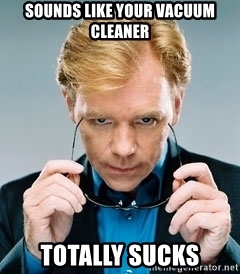Read time: 5.5 minutes
You might be shocked to hear that more vacuum cleaner wattage DOES NOT equal more suction power.
I can hear your gasps.
XO2 has been manufacturing cleaning products and supplies for professionals and facilities since 1968 and in terms of vacuum cleaner sales and marketing nothing much has changed.
Most retail and commercial vacuum cleaner suppliers have elevated wattage as the ultimate specification to compare vacuum cleaner performance... but don’t buy it. If you do. you’ll quite possibly be taken for a ride.
Here’s why…
Buying a domestic vacuum, commercial backpack vacuum cleaner or carpet extraction machine can be confusing.
How do you compare and make sure you’re not buying a dud?
What’s the truth about a vacuum cleaner's real cleaning performance?
Discussing suction is a little more detailed than the simple explanations that are often offered. But the issue of whether wattage equals suction is quite simple because the answer is a resounding NO.
Does higher wattage equal greater suction?
It’s probably best to address this question first. Most people believe the answer is yes.
The simple fact of the matter is that wattage is only a measurement of how much power (or electricity) will be consumed. So a 1000W vacuum cleaner will use 1 kilowatt (1000 Watts) of electricity in 1 hour.
The point here is that it is a consumption measurement, rather than a power output measurement… it tells you nothing about suction.
If you want to use more electricity, then use a vacuum cleaner with higher wattage.

Rate vacuum performance by airflow and suction, not wattage
If you want to understand how to rate the performance of a vacuum cleaner seriously, then it is important to understand 2 concepts and wattage is not one of them.
The 2 concepts are…
1. Suction and
2. Airflow
Let’s look at each concept independently, but while we do that keep in mind they work together. You cannot have any vacuum performance without suction and airflow working together.
You don’t have to think about wattage at all because it doesn’t matter what wattage the motor has.
To help develop a good understanding of how these 2 concepts work together to create the vacuum cleaners’ performance, I’ll make a statement:
Suction (very basically) is what picks up the dirt (and creates the velocity/speed of airflow), and the airflow (volume of air on the move) is what moves the dirt away.
1. Vacuum Suction
Suction (or pull of air) is often referred to as water lift or vacuum. Suction is ultimately what gives a given volume of air its speed or velocity by the vacuum motor. The more suction you have, the quicker a given volume of air is moved. This volume of air I’m talking about is the airflow which I’ll discuss next.
Suction can actually be measured on a suckometer gauge, and it measures the amount of suction in terms of water lift in inches. This measurement indicates how high (in inches) the suction will lift a column of water. This vacuum or suction figure (measured as waterlift) is a good rating to use when evaluating performance. All vacuum motor manufacturers have these measurements readily available.
So now, what is vacuum airflow all about?
2. Vacuum Airflow
Airflow is often referred to as CFM, which measures the volume of air being displaced in a vacuum system in cubic feet per minute. Airflow is also sometimes measured in litres per second.
Airflow is what moves the dirt along, that suction has picked up. (Much the same way as the wind carries away the dust). Hopefully, you can see that it is this interconnection of both suction and airflow that give us vacuum cleaner performance. One cannot exist without the other.
As a final word on airflow, the only other things that will affect airflow, will be resistance present in the vacuum hose, filtration of the vacuum cleaner, floor tools and accessories. That’s why the design of a machine and its accessories really matters, not just the specification of the vacuum motor.
The 5-cent coin example of suction without airflow
To help make a mental picture, consider placing a 5-cent piece on a table.
With the vacuum cleaner shut off, place the bent end piece over this 5-cent piece so that no air can get in the bent end piece.
Now turn on the vacuum cleaner, wait a few seconds, and then turn the vacuum cleaner off again.
When you lift the bent end piece, you will notice the 5-cent piece hasn’t budged an inch, even though there was vacuum suction!
If you were to perform the same experiment, but this time with the vacuum cleaner running from the beginning, you will notice the 5-cent piece will be whisked away due to the rush of airflow.
This experiment clearly shows that suction alone is not sufficient. When you combine airflow with suction, you then get vacuum cleaner performance!
Suction and airflow together
The relationship between suction and airflow is very important.
The interesting thing about them is that they share an “inverse relationship”. When suction is high, then airflow is low, and vice-versa.
The easiest analogy to draw would be comparing the suction of a vacuum cleaner to that of an extraction fan in a kitchen or bathroom. The vacuum cleaner has much higher suction, with a relatively low airflow, whereas an extraction fan has a very low suction ability with a high airflow.
Let’s summarise...
If you’re serious about assessing the performance of retail or commercial vacuum cleaners, then look at the suction (waterlift) and airflow figures, not the wattage.
You also need to keep in mind that vacuum motor technology has improved significantly over recent years.
By spinning motors faster and using tapered fan technology, better performance is achieved without increasing power consumption (wattage).
That means we can get better performance with low wattage or energy consumption.
And one last thing
It would be wise to use good quality vacuum cleaner floor tools. This might also include considering a brushing floor tool like a vacuum cleaner turbohead or powerhead.
It doesn’t matter what type of motor is working in the vacuum cleaner, if the floor tool is poor quality, then the overall performance of the vacuum cleaner will be poor.
Well done if you’ve read all the way through this article. There’s quite a bit to get your head around. And you can probably see why salespeople much prefer to talk about vacuum cleaner wattage rather than suction and airflow. It’s the easy option. But it’s not the truthful one.
And if you’re looking for advice on cleaning chemicals, infection control, hand hygiene and washroom hygiene products for your facility, give the XO2 team a call today on 1300 123 499, or visit XO2's range of commercial cleaning products and supplies online by clicking here.

David Blamire, CEO at XO2
David is one of Australia's leading cleaning industry innovators. He's spent his entire working life solving cleaning challenges others thought were impossible. He's best known for his product creation and development skills along with a deep knowledge of business operations and all things ERP. In his spare time, David's a keen fisherman and adventurer. And he doesn't mind if you call him Davo.
Get in touch with David at www.xo2.com.au. He works from XO2's national headquarters and manufacturing centre in Queensland, Australia.
Related articles:
- How To Use A Backpack Vacuum Cleaner
- Which Vacuum Cleaner Floor Tool Is Right For You?